Mobile Crushing Plant Ultimate Guide: Flexible, Efficient, for Project Success?
3895Discover the 7 crucial aspects of mobile crushing technology, from its benefits and applications to key operational considerations for peak efficiency.
View detailsSearch the whole station Crushing Equipment
A profitable gold processing line is a custom-designed system that crushes, grinds, and separates gold. The best method—whether gravity, flotation, cyanidation, or a smart combination—is determined by one thing only: your ore’s unique characteristics, as revealed by professional testing.
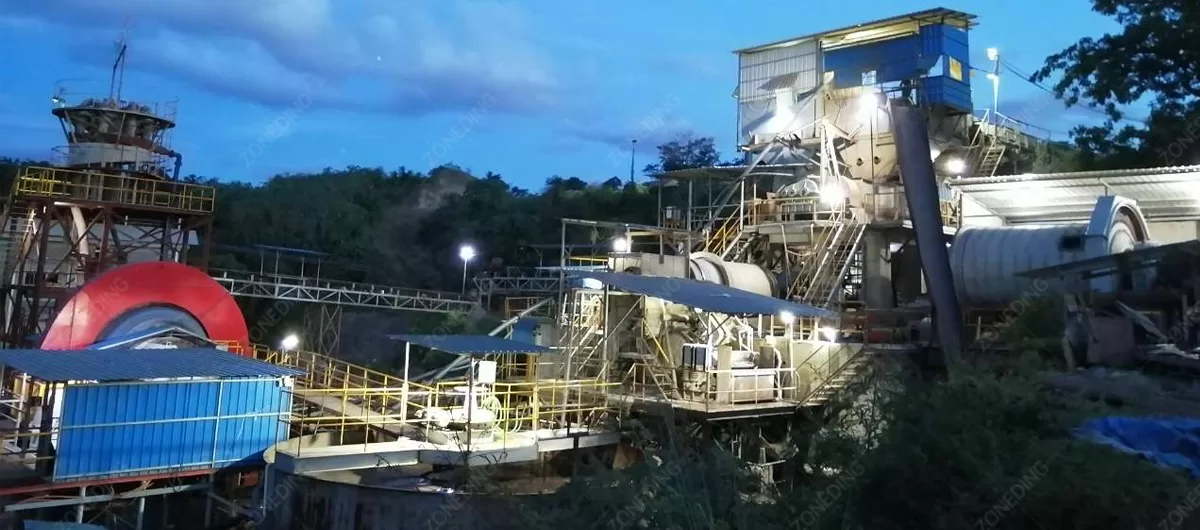
Thinking all gold ore is the same is the fastest way to fail. This simple misunderstanding can bankrupt your project before it starts. Knowing your ore type is the first and most critical step.
Gold ores are mainly either placer gold (alluvial deposits in sand/gravel) or lode gold (in solid rock). Lode gold is further divided into “free-milling” ore, where gold is easily freed, and “refractory” ore, where gold is microscopically locked inside other minerals like sulfides.
Before you even request a quote, you must know what you’re dealing with. This is not optional. Sending your ore to a lab for detailed analysis is the best investment you will ever make. It tells you exactly how the gold exists in the rock. In the gold world, we have two main families of ore, and they require completely different approaches. One is simple; the other can be a nightmare. Trying to use a simple process on a complex ore is like trying to open a bank vault with a credit card. It will never work. At ZONEDING, designing the right Gold Processing Plant always begins with this crucial testing phase. It’s the only way we can guarantee results.
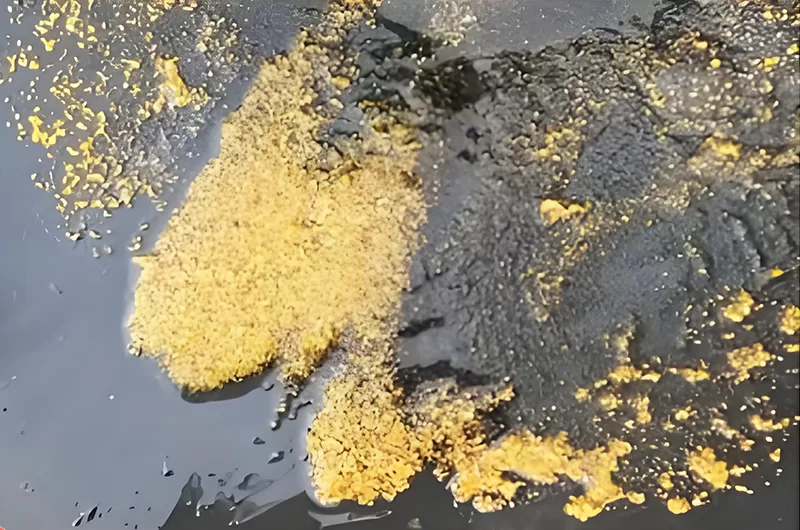
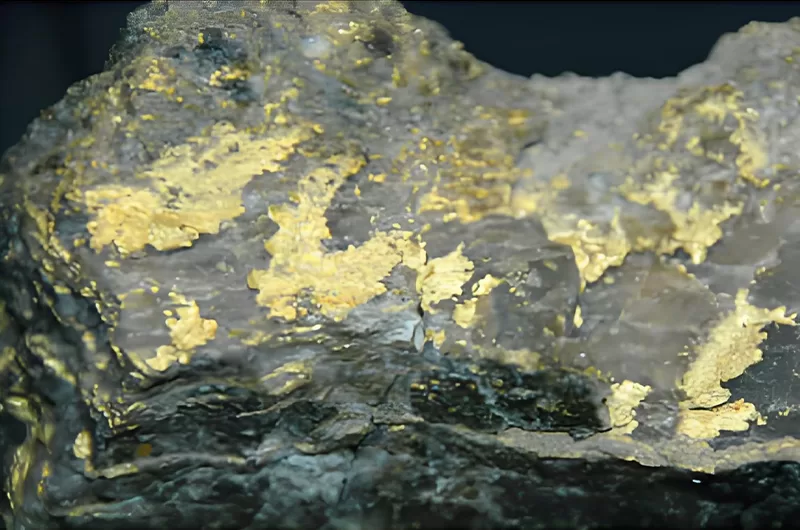
| Ore Type | Description | Best Processing Approach |
|---|---|---|
| Placer Gold | Gold dust and nuggets in sand, gravel, or clay. Not chemically bound to rock. | Simple physical separation. Focus on washing, screening, and gravity methods. See our Placer Gold Mining solutions. |
| Free-Milling Gold | Gold particles are coarse enough to be liberated from the host rock by simple grinding. | A smart combination of gravity separation and cyanidation (CIL/CIP) is highly effective. |
| Refractory Gold | Gold is invisibly locked within sulfide minerals (e.g., pyrite, arsenopyrite). | Requires complex pre-treatment like flotation or oxidation before cyanidation can work. |
You have “easy” free-milling gold. That’s great news. But using a poorly designed plant will still destroy your profits. There is a smart, efficient way to process it.
For free-milling gold, the most efficient design follows the “Gravity First” rule. Use a gravity circuit to recover coarse gold early, then send only the fine material to a CIL/CIP circuit. This maximizes recovery, shortens processing time, and lowers chemical costs.
This is where you can be smarter than 90% of operators. Many people just grind everything fine and dump it all into cyanide tanks. This is a massive mistake. Coarse gold dissolves very slowly in cyanide. You’re wasting time, power, and expensive chemicals waiting for it. The professional approach is to install a gravity circuit right in your grinding loop. We use machines like a Centrifugal Concentrator to pull out the “gravity-recoverable gold” before it ever sees cyanide. This gold can be 20% to 70% of your total gold. You get this gold out fast, and you can melt it for immediate cash flow. The remaining fine gold then goes to the Gold CIL Plant. Because you’ve already removed the hard-to-leach coarse gold, the cyanidation process is faster and more efficient. You use less cyanide, less carbon, and your overall recovery is higher. This two-step approach is the secret to high profitability for any Hard Rock Gold Mining operation.
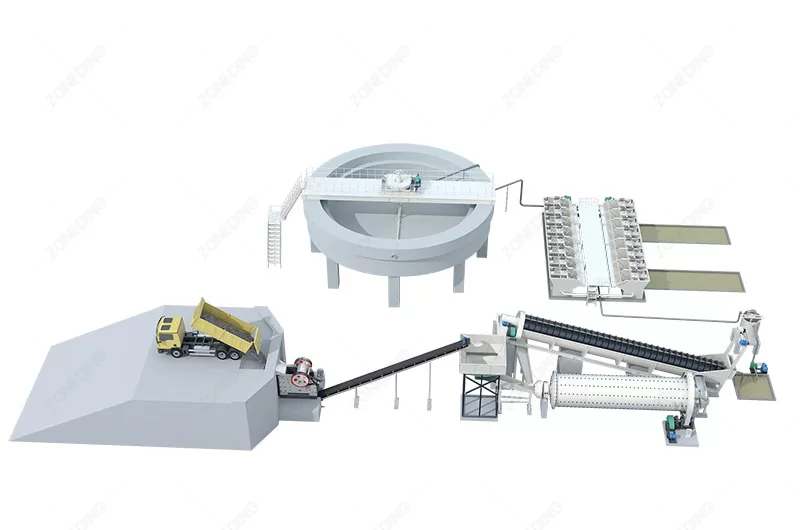
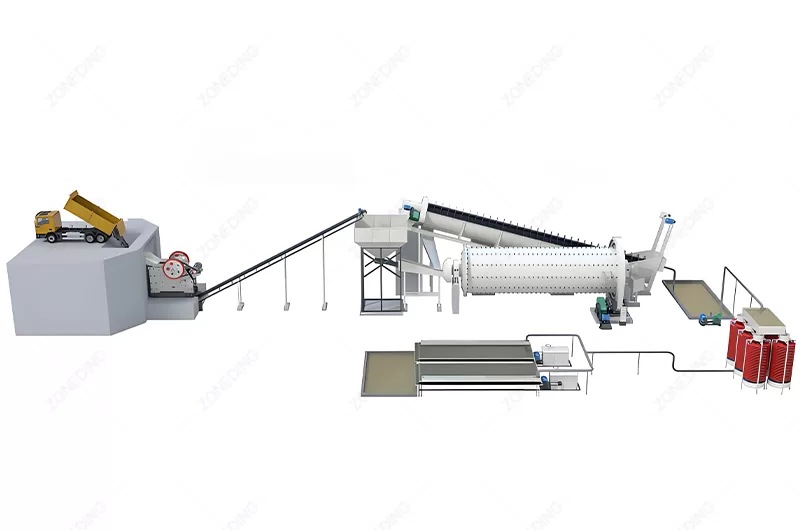
| Stage | Goal | Key Equipment |
|---|---|---|
| 1. Crushing | Reduce rock to a manageable size. | Jaw Crusher, Cone Crusher |
| 2. Grinding | Liberate gold particles from rock. | Ball Mill in circuit with a classifier. |
| 3. Gravity Recovery | Capture coarse gold early. | Centrifugal Concentrator, Spiral Chute |
| 4. Leaching & Adsorption | Dissolve fine gold with cyanide. | Mixer Tanks, CIL/CIP Leaching Tanks |
| 5. Elution & Smelting | Recover pure gold from carbon. | Elution System, Electrowinning Cells, Furnace |
Your ore is refractory. Cyanide alone won’t work. This is the challenge that scares most investors, but there is a proven solution if you follow the right steps.
The cure for refractory gold is a two-step process: concentration followed by oxidation. Use flotation to concentrate the gold-bearing sulfides, then use an oxidation method (like roasting) to finally expose the gold for a final cyanidation step.
Refractory gold is a prisoner inside another mineral, usually a sulfide like pyrite. You can pour cyanide on it all day, but the cyanide can’t touch the gold. You must first destroy the prison walls. The smartest way to do this begins with Gold Flotation. Instead of trying to treat the entire mountain of ore with expensive processes, we first use Flotation Machines to produce a sulfide concentrate. This concentrate might be only 5-10% of the original ore weight, but it contains over 95% of the gold. Now, you only have to apply the complex and costly oxidation process to this small volume of material. This is a massive cost saving. After you have the concentrate, you must use an oxidation method—like roasting (heating it) or pressure oxidation (using an autoclave)—to break down the sulfide minerals and liberate the gold. Only then, as a final step, can you use a standard cyanidation circuit to dissolve and recover the gold. This multi-stage approach for Sulfide Ore Processing is the only proven way to profitably tackle refractory ore.
| Pre-Treatment Method | How It Works | Best For |
|---|---|---|
| Flotation | Concentrates gold-bearing sulfides into a smaller, high-grade volume. | The essential first step for almost all refractory ores. |
| Roasting | High heat burns off sulfur, cracking open the host mineral to expose gold. | Ores with high sulfur content; a very effective method. |
| Pressure Oxidation (POX) | Uses heat, oxygen, and pressure in an autoclave to dissolve sulfides. | Very effective for complex ores, but has a high capital cost. |
| Bio-oxidation (BIOX) | Uses special bacteria to “eat” the sulfide minerals. | Lower energy cost, but is slower and requires very careful control. |
You have a limited budget but a promising small deposit. You don’t need a massive, complex plant. You need a simple, robust, and profitable solution that gives you quick cash flow.
For a small-scale mine, the most reliable and affordable plan is to focus almost entirely on gravity separation. A simple line with a crusher, a grinder, and gravity equipment like shaking tables or jigs is low-cost, easy to operate, chemical-free, and highly effective for many ores.
When your capital is limited, simplicity is your best friend. Forget about chemicals, complex circuits, and high-tech controls. You can build a very profitable small mine by focusing on one thing: gravity. Many small deposits have a good amount of coarse, free gold that can be recovered very efficiently with simple, robust machines. The workhorses of this type of operation are often a Jigging Separator Machine for coarser material and Shaking Tables for finer sands. A shaking table is a beautiful thing to watch; it uses only water and vibration to separate the heavy gold into a clean streak of pure concentrate. For grinding, a Wet Pan Mill is another excellent, low-cost option that both grinds and captures gold simultaneously. This entire process uses no cyanide and has very low operating costs. It is the perfect strategy to get started and generate revenue quickly without taking on massive debt.
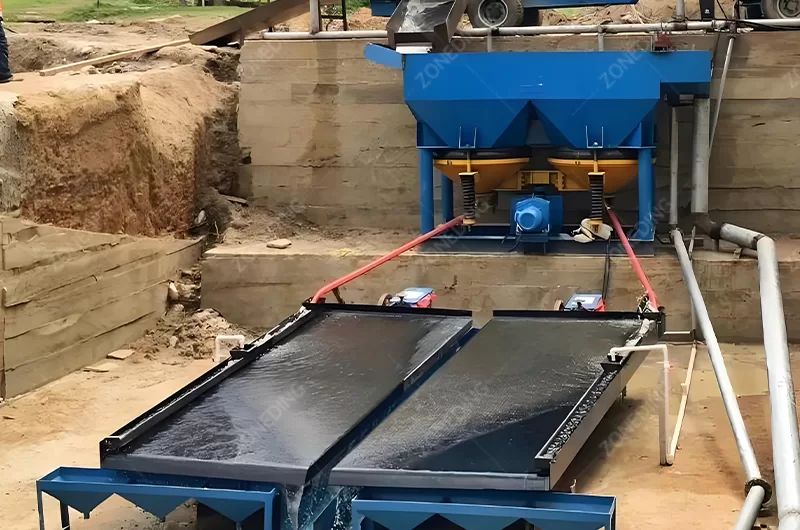
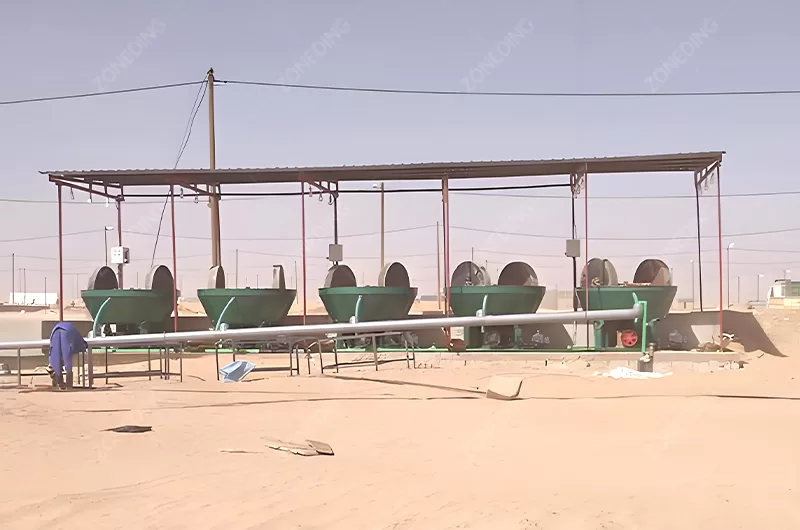
The word “cyanide” scares people. But in professional hands, it’s a manageable tool. The real danger is not the chemical itself, but ignorance and cutting corners.
Cyanidation is not scary when managed with strict professional protocols. Safety is ensured through three key actions: maintaining a high pH (>10.5) to prevent toxic gas, detoxifying all tailings before discharge, and providing thorough training and proper PPE for all operators.
Let me be direct. Cyanide is a poison. But so is gasoline. We use them safely every day because we respect them and follow strict procedures. It is exactly the same in a modern Gold CIP Processing Plant. The biggest danger is the formation of deadly hydrogen cyanide (HCN) gas. This only happens if the solution becomes acidic. The solution is simple and non-negotiable: we add lime to the slurry to keep the pH level high, between 10.5 and 11. At this pH, cyanide is stable in the solution and safe to work with. The second pillar of safety is tailings management. The leftover slurry still contains cyanide. A modern plant has a dedicated detoxification circuit that destroys the cyanide before the water is recycled by a High Efficiency Concentrator or the tailings are stored. With proper engineering, training, and procedures, a cyanidation plant is a responsible and safe operation.
You can’t build a processing plant by just buying a crusher and a tank. A successful plant is a complete ecosystem of machines working in harmony. Here is what you really need.
A complete gold processing line includes core equipment for crushing, grinding, and leaching, supported by essential auxiliary equipment for feeding, screening, pumping, water management, and final gold recovery. Every single piece is critical for the system to function.

Building a Gold Processing Plant is like building a car. You can’t just have an engine and wheels. You need the transmission, the cooling system, the pumps, and the electrical system. Too many people focus only on the big machines. They forget the “boring” but vital support equipment. Without a proper Vibrating Feeder, your crusher is inefficient. Without the right slurry pumps, your plant stops. Without a Vibrating Screen, you can’t classify your material correctly. This is why we provide complete, one-stop solutions. We consider every single piece of the puzzle, from the first rock to the final gold bar, to ensure your entire plant runs smoothly and profitably.
| Stage | Equipment Category | Specific Machines |
|---|---|---|
| 1. Comminution | Crushing & Grinding | Vibrating Feeder, Jaw Crusher, Cone Crusher, Ball Mill |
| 2. Classification | Size Separation | Vibrating Screen, Hydrocyclone or Spiral Classifier |
| 3. Separation | Concentration/Leaching | Gravity Concentrator, Flotation Machine, or CIL Leaching Tanks |
| 4. Recovery | Gold Extraction | Elution & Electrowinning System, Smelting Furnace |
| 5. Auxiliary | Water & Tailings | High Efficiency Concentrator, Slurry Pumps, Filters, Detox Circuit |
You are faced with three main paths. The choice is overwhelming, and a wrong turn is incredibly expensive. Let’s simplify this final, critical decision.
Your final decision must be based on two things: your ore test results and your investment budget. The ore test is non-negotiable; it tells you what is technically possible. Your budget then determines which of the possible solutions you can afford to build.
After 50 years, I can tell you the secret to making this decision: let the ore decide. Your opinion, your friend’s advice, and what you read online are all irrelevant until you have the data. A comprehensive metallurgical test will tell you the truth. It will tell you the percentage of gold you can recover with simple gravity. It will tell you if the gold can be floated. And it will tell you how well it dissolves in cyanide. Once you have these technical answers, the decision becomes a business calculation. The best path is always the one that is technically sound and financially viable for you. Don’t chase the highest possible recovery if the investment costs are too high. It’s better to run a profitable 85% recovery plant than a bankrupt 95% recovery plant.
| If Your Ore Test Shows… | And Your Budget Is… | Your Best Strategy Is… |
|---|---|---|
| High Gravity Recovery (>40%) | Low | Build a gravity-only circuit first. It’s low-cost and gives quick returns. |
| High Gravity + Fine Gold | Medium to High | A combined Gravity + CIL plant is the most profitable choice for maximum recovery. |
| Refractory (Sulfide-Locked) | Low | Do not invest. The technical risk is too high for a small budget. |
| Refractory (Sulfide-Locked) | High | A Flotation + Oxidation + CIL plant is necessary. This requires significant capital. |
| Mixed Sulfide/Oxide | Medium to High | A combined Gravity + Flotation circuit to create separate concentrates for different treatments. |
Success in gold mining comes from knowledge, not luck. You must understand your ore first, then partner with an experienced manufacturer to design the right processing line.
Discover the 7 crucial aspects of mobile crushing technology, from its benefits and applications to key operational considerations for peak efficiency.
View detailsGuide to improving ball mill output. Learn about optimizing grinding media, feed, speed, and liners to achieve maximum productivity and efficiency.
View detailsGet gold concentrates with the right equipment. Discover the 8 essential machines for placer & hard rock gold mining, and learn the secret to fine gold recovery.
View detailsOptimize mineral processing! Compare spiral classifiers vs. hydrocyclones. Learn 5 differences to select ideal equipment for efficiency & beneficiation.
View detailsWe use cookies to ensure that we give you the best experience on our website. If you continue to use this site we will assume that you are happy with it.
Privacy Policy